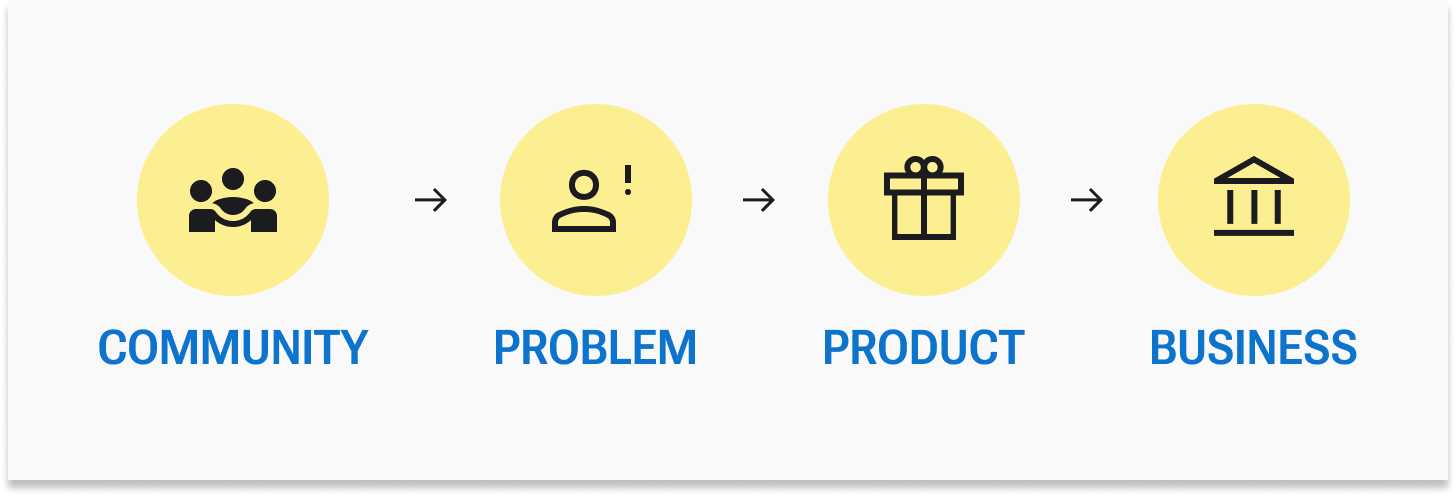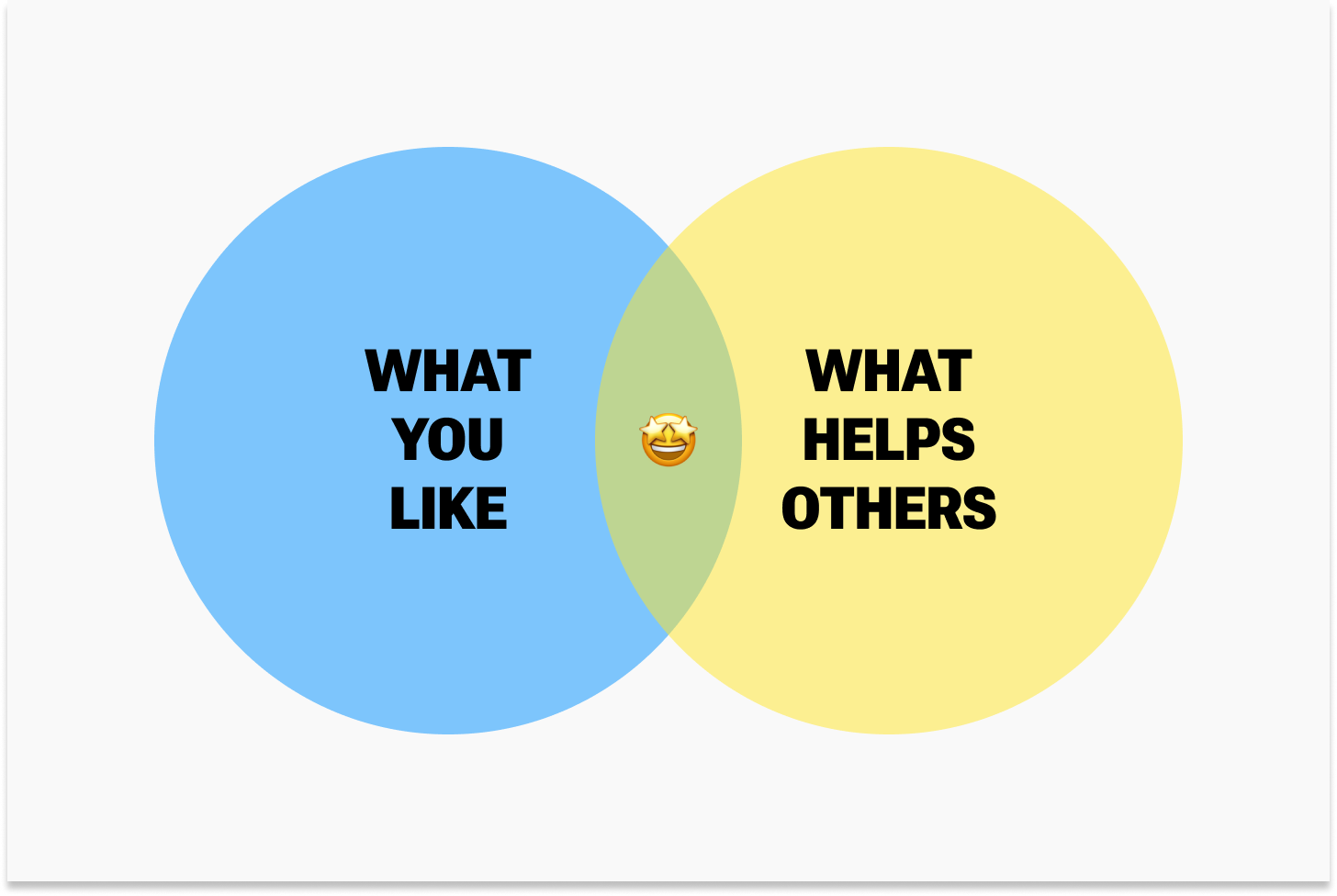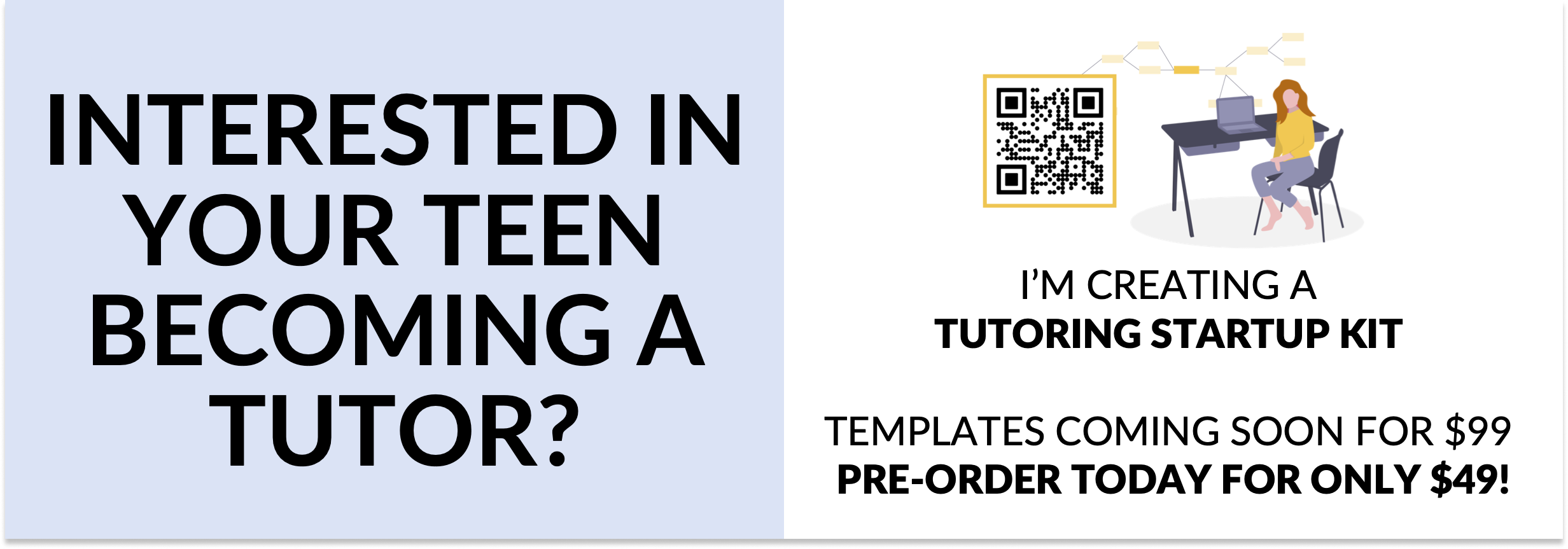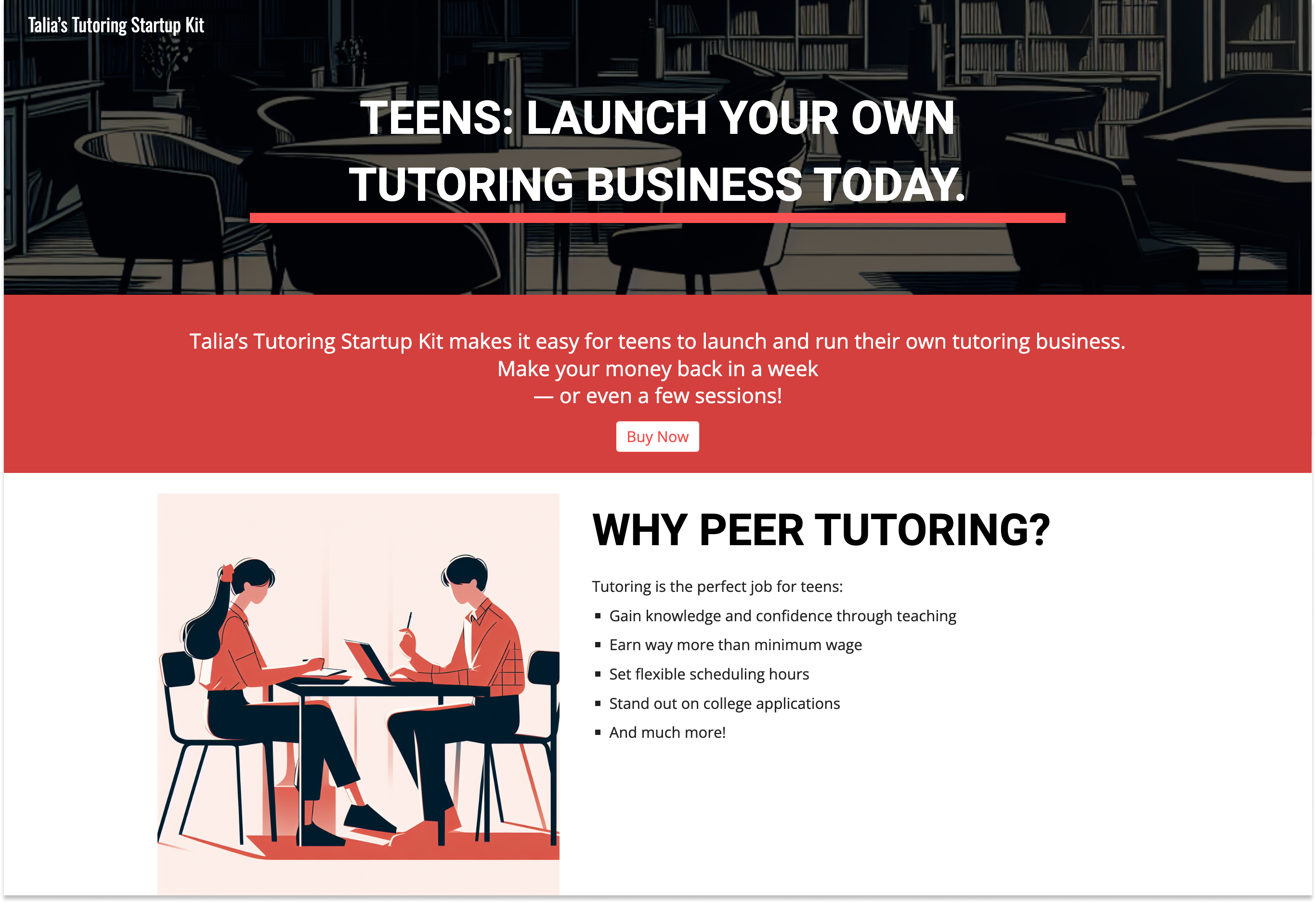In a recent LinkedIn post, I shared a project I worked on recently with my daughter: Talia’s Tutoring Startup Kit. As she’s focusing now on getting her “next 10 customers,” I thought it would be interesting to reflect on the process we went through to design and build this digital product. Once I started writing, I realized there was quite a bit to include, so I’m splitting it into two parts:
- Part 1: Concept and Validation
- Part 2: Building and Delivering
I’ll be using Sahil Lavingia’s book, The Minimalist Entrepreneur, as a framework to help organize and tell our story. It’s full of great material and perspective, and I highly recommend it for anyone interested in starting their own business.
Concept
When starting a business, Sahil emphasizes the importance of starting from within a community you’re already a part of. Through participation in a community, you’re able to identify problems you and others are facing, which can lead to product ideas and eventually a sustainable business.
For Talia, her community was our network of friends and acquaintances we knew through various social institutions like school, the gym, the library etc. The problem we identified years ago was that parents felt they were paying learning centers a lot of money without getting the attention and results they expected. This led to her “solving her own problem” by starting and growing a math tutoring service — Talia’s Tutoring.

Starting with community leads to identifying problems, products, and maybe a business! (Reinterpreted from The Minimalist Entrepreneur)
After doing this for several years, the question became how to take it to the next step of making a product. She can only offer so many sessions and take on so many students. How do you scale? She could hire and manage other peer tutors, but that seems like a big, complex leap. She could start a marketplace to connect others, but involving other people in this way, especially minors, comes with risks as well.
Instead of trying to expand her reach directly, we landed on packaging what she had learned over the years to empower other students like her to start their own tutoring services. Talia already enjoyed teaching her peers about math. Now she could teach her peers about teaching their peers about math, but in a much quicker and more efficient way than she experienced, having to figure things out along the way. Sahil writes about finding the overlap between something you like doing and something that benefits others. So a peer tutoring product seemed like a great fit.

Find the overlap of what you like and what helps others. (Reinterpreted from The Minimalist Entrepreneur)
While free tutoring services available to Talia’s classmates both in-person and online are a wonderful benefit, providing maximum access for those who need it, we felt that peer tutoring had some unique advantages and positive benefits as well. It’s a win-win-win for students, parents, and peer tutors:
- Students get the help they need from someone they can relate to, who has probably gone through the same class recently.
- Parents get more personalized help for their kids that’s more affordable than the learning centers.
- Peer tutors learn valuable life and work skills, like communicating with adults, balancing a schedule, and managing money — while getting paid pretty well compared to other jobs.
Validation
Early in the book, Sahil tells us about a critical mistake he made in starting his first business. Once he had an idea, he jumped right into building. Learning from this, he tells us in the chapter “Build as Little as Possible” to “build last.” Just like a school science project, he wants you to form a hypothesis, test it, and validate your idea before you pour a bunch of time and effort into it. (Pro tip for parents: always make your kids do school science projects, even if they’re optional.)
We validated our idea on two levels before building. One approach was to simply make a flyer and a landing page (using only a Google Form) to pitch and sell the idea as a pre-order. Talia made the flyer in Canva, printed it, and bought a plastic stand to hold it. We worked together on the landing page copy, with the primary call-to-action being to place an order and the second to enter an email to get updates if they weren’t ready to buy. I set up a pay link using GoDaddy, but you could also use PayPal, Stripe, or a similar service. Then we added the link to the landing page and a QR code to the flyer. And that was all we really needed, which took us less than a week to put together.

Flyer for the Merry Market
As for the other level of the validation, I realized that Talia had already been doing this on a deeper level for quite some time. As a practicing tutor, she had developed and refined a process over several years. Now she had the knowledge and experience to “perfect and automate” it by packaging this process into a turnkey solution for others. Sahil calls this “processizing.” By going through the process herself, she learned how to start and run a tutoring service — finding customers, managing sessions, collecting payment, etc. — and now she could teach it to others through a customizable digital product. When we thought about it this way, it gave us more confidence in our idea.
But what did other people think? We didn’t really know until someone actually voted with their dollars. When it comes to product development, encouragement doesn’t count for much. Orders matter. Fortunately, we had the perfect opportunity to find out. Talia had already booked a table at an upcoming “Merry Market” event in our neighborhood to promote her tutoring service. Now she could pitch her “tutoring startup kit” alongside it. (Need tutoring? Sign up here. Interesting in starting tutoring? Pre-order the kit with everything you need — coming soon!) She didn’t get any orders that night, but a couple weeks later, on New Year’s Eve, I saw an email from GoDaddy — the first order. It was from the son of a couple we met at the event. After hearing about it from his parents, he decided to buy it with his own money. Customer validation! Sure, more than one would have been nice to kick things off. But we felt it was enough to start building.

Talia’s Tutoring Startup Kit website
In part 2, we’ll do a deep dive into the build, including settling on the platform, making product decisions, and overcoming technical challenges. In the meantime, if you know any teens who would be a good fit for peer tutoring, tell them to check out the kit. 😉